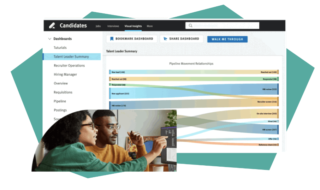Content auditing is a crucial first step when looking to improve your content marketing strategy. By taking stock of your existing content, identifying gaps, and evaluating performance, you gain valuable insights to inform your future content creation. A content audit provides the foundation to build an effective plan that resonates with your audience and aligns with business goals.
Let’s explore how to go from audit to action.
Contents
Conduct A Thorough Content Inventory

The first step in content auditing is cataloging all existing content assets. This includes blog posts, ebooks, whitepapers, case studies, videos, podcasts, infographics, and any other materials. Track key information like title, publish date, topics covered, and any performance data available. This inventory illuminates content gaps and overlaps. You may find certain topics well covered while others lack assets. An organized spreadsheet or content management platform streamlines this process.
Analyze Content Performance

With a complete inventory, dive into performance analysis. Look at metrics like traffic, engagement, leads, and conversion rates for each piece of content. High-performing assets indicate topics and formats that resonate with your audience. Underperforming content reveals areas to refine and improve. You may uncover content types like long-form guides that outperform short social media posts. This data directly informs what you should produce more of.
Identify Content Gaps
Your inventory and performance analysis illuminate content gaps to address. Look for topics frequently asked about that lack sufficient assets. Check search engine keywords driving traffic to your site but with sparse content coverage. Visitor behavior can also reveal gaps, such as high bounce rates on certain pages. Conduct surveys and interviews with customers to source gap areas they want to be covered. This ensures you create content that speaks to buyer needs.
Assess Content Consistency
Take a hard look at how well your content aligns with brand voice, tone, messaging, visual style, and quality standards. Analyze if assets communicate a consistent brand identity. Contradictory or disjointed content will confuse audiences. Define guidelines to foster alignment moving forward. Look at top-performing content that strongly captures your brand essence. Model future content after these assets to project consistency.
Set Content Goals
With audit findings in hand, set measurable goals to shape content plans and production. If admittedly sparse video assets underperform, set a goal for monthly video output. Discover certain topics, convert highly, and set goals for more content on these themes. Establish specific call-to-action and lead-generation benchmarks. Analytics gleaned from the audit informs realistic, data-driven goals.
Develop A Strategic Content Calendar
An editorial calendar provides a roadmap to execute goals through organized content creation. Map content types to match audience needs and preferences revealed in the audit. Pursue identified gaps with targeted assets optimized for conversion. Double down on highly engaging topics and formats while phasing out underperforming content. Take performance data into account when allocating resources and budget between content initiatives. Keep the calendar dynamic as new insights emerge.
Refine Content Creation Workflows
Use audit findings to streamline content creation and improve output. Look for workflow inefficiencies contributing to performance gaps. Implement tools and platforms to smooth collaboration and centralize assets. Improve internal review and approval processes to accelerate publishing. Build workflows to easily repurpose and update evergreen performing content. Invest in content creator training and resources. Workflows directly impact the consistency, efficiency, and quality of content output.
Amplify Top Content
Your audit surely uncovered standout content assets worth amplifying. Develop a promotion strategy to increase their reach and impact. Feature top performers prominently on your website and in newsletters. Repurpose this content into new formats like videos and podcasts. Identify targets for guest posting and syndication opportunities. Pitch earned media placements to increase visibility. Great content deserves increased exposure through smart distribution tactics.
Measure What Matters
Evolving content plans require continuously monitoring performance indicators. Establish processes for ongoing measurement against goals. Key metrics to track include traffic, engagement, lead generation, and ROI. Course correct content initiatives that veer off target. Amp up efforts to deliver strong results. Follow external changes like new competitors or shifting buyer preferences that warrant content adjustments. Use real data to guide your evergreen content marketing program.
The Path Forward
An audit provides tremendous insights to chart the course ahead. By harnessing data and insights in the right way, you gain a content roadmap tailored to your brand, audiences, and goals. Regular audits help you continuously refine and improve. The most effective content plans turn audit findings into action. With the right strategy and processes in place, you build content people crave.
Conclusion
A content audit is the crucial starting point for enhancing your content marketing. By thoroughly analyzing existing assets and identifying gaps, you gain data-driven insights to inform an improved plan. Conduct ongoing audits to stay aligned with audience needs as they evolve. Turn audit insights into action through strategic content creation, distribution, and measurement. With the right framework in place, your content cuts through the noise to connect with customers.


